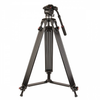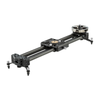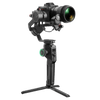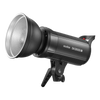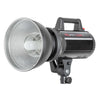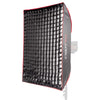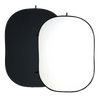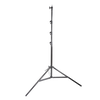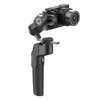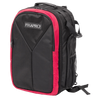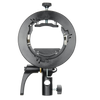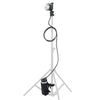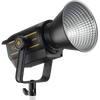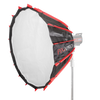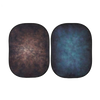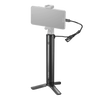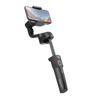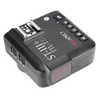There are many questions in photography and photo tips you might have when starting photography. What continuous light should have for the whole scene?
In fact, LED Panel lights and LED Head lights to become the most popular on the market for lighting are designed incredibly. However, there are still a few differences that made these lights made are not equal. Here are some things you should know about LED Panel lights and LED Head lights.
Let’s Compare The Difference Between Compact Fluorescent Light (CFL) and LED (Light-emitting Diode) - Photo tips
Watts
The fact that LEDs use less energy than CFLs is one of their most evident benefits. Additionally, it explains why more LED lighting is promoted today. Because LED lighting uses less energy than CFL and incandescent light bulbs. It is more durable and energy-efficient than its rivals. Now, when you choose your CFL bulk and you would be concerned about the power of light. It is also useful to know that a 16.5-watt LED light is equivalent to a 20-watt CFT light. Obviously, you have to buy more than 4 CFL lights and charge over when compared with only 1 LED light.
Lifespan
The disadvantage of the CFL light bulb is it is very fragile and has a shorter light span. For example, LED has an expected lifespan of 50.000 hours while Compact Fluorescent light only has around 10.000 lifespans.
Cost-effective
When comparing the price of these two light bulb products, the CFL light bulb is less expensive. However, it will generate lots of heat compared to the LED, the more expensive one. For a long time, LED bulb reduces your overall cost since you buy fewer bulbs over a period of time.
Environmental impact
LED is provided effective energy consumption, a longer lifespan and is much more environmentally friendly when compared with CFL. Moreover, with a longer lifespan, the less replace which means decreasing the Carbon Dioxide Emissions (CO2) to the environment. In contrast, CFL light depends on mercury which leads to an increase the waste disposal issues at the end of the light's life. Furthermore, it will become more dangerous for use if the bulbs break releasing a small amount of toxic mercury.
Other benefits of LED bulb
Another benefit of LED bulbs is their ability to be used in a variety of wattages and voltages. It allows you to create different single colours and colour changing. This has also proved that LED is more suitable for shooting as the light can continuously turn on. Moreover, the light will spread 360 degrees which is not focusing so shooting the product may not be suitable. While other shortcomings of CFL light include non-directional light generation. For example, the light is directed at the ceiling rather than the room.
Eventually, the LED bulb seems to become the perfect choice without a doubt. If you want to set up a photographic studio, or video photography to produce high-quality light output. That is not only powerful, and cost-effective but also offers variable colour temperature with high CRI. There are some products of Godox using LED for their flashlight. It is very perfect for photographers using in studio shooting like FV150/FV200.
The table below shows LED light is better than CFL light with the extremely long life span, energy efficiency, high quality and low maintenance costs.
|
LED vs CFL |
CFL |
LED |
|
Watts used |
14W |
7W |
|
Average cost per bulb |
$2 |
$4 or less |
|
Average lifespan |
8,000 hours |
25,000 hours |
|
Bulbs needed for 25,000 hours |
3 |
1 |
|
Total purchase price of bulbs over 20 years |
$6 |
$4 |
|
Cost of electricity (25,000 hours at $0,15 per kWh) |
$52 |
$30 |
|
Total estimated cost over 20 years |
$54 |
$34 |
LED Panel
LED panels provide a much wider spread of light and are controlled by barn doors connected to the unit. This makes them perfect for covering a large area with light for usages like theatre or broadcast. Furthermore, the panels also give the user the opportunity to produce a bright image in a handy package. By the ability to spread the light, which is ideal for lighting larger areas and subjects. In fact, LED panels to work by utilising numerous tiny chips or bulbs on a flat panel. You may see an illustration of this such as VNIX1500, VNIX1500B Bi-colour, and VNIX1500S Daylight at the Pixapro company. Therefore, LED panels are the hosted new trend and favoured choice of photography lighting by many professional photographers. However, it also makes the LED Panel lights more difficult to accurate the specific spot.
Although panels can be used for almost anything. The feature of the LED Panel is also controlled by DMX Control to manage and control all these lights together. This functionality, which is uncommon for LED Heads, is immensely helpful for larger projects. Like a game show, there are lots of LED panels around the stage. So it will require to have a DMX Controller to control each light.

LECOO1000B II Super Bright Bi-Colour LED Panel
LED Head
On the other hand, the design of the LED Head is very different from the LED Panel (light bulb). There is normally a round shape covering the led light bulb with LED Head. FV150/FV200 and AD200 Pro of Godox is a very good example of the LED Head. These products are very suitable for use as a fill light in the background because of their functionality. The LED chip has a smaller-sized light source. So, if you take the photoshoot in a small area or in a small group, both of the units will be the perfect choice for you.

And also LED Head come with its own positive but there is no DMX port in LED Head which may come as a disadvantage when compared with LF308 in the flexibility. But the LED Head is equipped with built-in cooling fans. It will help photographers to use it without worrying about overheating the light bulb and also can protect the light from accidental damage.
In summary, these two lights are definitely positive and suitable for different requirements for the lighting when compare the LED Panel and LED Head. However, the quality of light not only depends on the types of light such as LED Panel lights and LED Head lights. Moreover, the quality of light also depend on the index including light shaper, colour temparature, CRI, TLCI, LUX, Lumens, Beam angles and Flicker.
Soft Light (Light Shaper)
Firstly, let find out what is the light shaper which also known as soft light. There are three types of light in photography: hard light, soft light, and bounce light.
The first one is hard light with the special part of the picture to create attention. Using bright light emphasises changes in colour, shape, and texture. Photographers will use sunlight as their hard light which will help to increase the intention of the photo, subject stronger and show the serious. Normally, the photographer will use a reflector with the grid in sunlight to focus on the subject. Instead of spreading the light all over the surrounding. It is also frequently used in producing action movies and film noir. In this case, the camera flash is a good illustration to employ harsh shadows. The Godox camera flashes released some units that can be utilised to create harsh light shapers such as the V1, V350C, and TT685C.
This technique is not focusing on creating shadow, it will define between the light and the shadow which is in contrast with soft light. Therefore, the purpose of soft light is to eliminate the harsh shadow or reduce it to make it more smooth in the transition of the light and shadow. With this technique of reflecting the light, the model will become much more beautiful as it will minimize the appearance of wrinkles and blemishes on the model face. So, soft light is one of the perfect light when you want to take the portrait lighting styles. Moreover, when shooting outside on cloudy or overcast days, the cloud will create a diffusion between the sun and the model so this will also create soft light. Many photographers used softbox, beauty dishes and reflectors to create soft light. However, shooting portraits, fashion, food or travel usually used soft light to create a natural-looking, warm and friendly subject.

Hard light vs Soft light - Photo tips
The above light shaper will need the support of a bounce light. This is a tool to bounce the light from a source light towards the subject. Moreover, some products are supposed to reflect the sunlight to the subject to combine hard light and soft light. For example the iLux™ 5-in-1 Collapsible Bounce Reflector Kit or Foldable Reflector Panel of Godox to create diffuse illumination on the model. It is also ideal when you are shooting out in the middle sunday.
Tips Photo For Choosing Colour Temperature
Next, Pixapro photo tips will discuss the colour temperature. The photographer will normally use a Color temperature scale from 1500 to 7500 also known as Correlated Colour Temperature (CCT). With a warm light source, the temperature usually ranges from 2200-3000K, such as incandescent bulbs. And the cool temperature is higher than 4000K, like fluorescent lamps. Based on the different purposes of the event, the photographer will choose the different temperatures. If you take yellow retro light, the environment might have been forewarned when shooting wedding photography. The photographer must take care of the temperature as it will affect the result of the picture. When the white balance is taken care of, all colours of the final picture will be correct. This will help in reducing the editing stage.
Color Rendering Index (CRI) - Photo Tips For CRI
The next definition of the Color Rendering Index (CRI) is also important to know as a beginner in photography. This number will measure the accuracy of the source light with respect to the subject it is illuminating. In the studio lighting industry, a CRI of 90 or more is considered to be excellent. However, in filmmaking, light with CRI between 90-95 is close to perfect. If the colour rendering index is below 80 that is identified as having a poor CRI score. One notice for using CRI is the red colour. It is very important in many industries like photography, textiles and reproduction. Because it will help to make people look more beautiful without being pale or even green on skin tones.
In detail, the R9 shown how the light source will reproduce the red colour on the subject. Many light sources nowadays still lack R9 in their product. So, choosing the light source that has a high R9 score is important as it can help to make people more beautiful. And the product SL-60W of Godox is a LED-led headlight with 90+ CRI.
Besides CRI, there is one more scale that new photographer needs to consider which is The Television Lighting Consistency Index (TLCI). This is a new method which was very similar to CRI but it will use software to calculate the colour response from a video camera. The product Godox ML30Bi and the Godox SL series are a good example of this because it has a TLCI rating of 97. And according to the five levels of TLCI, from 85-100 means there is no need for colour correction. This photo tips help to save lots of time when editing the picture, or video.
Both figures are talking about the colour in shooting, but which one should you consider more, or which one is better? The main difference between these two methods is the way it uses to measure the colour response, CRI will render colour based on human perception while the other use software which can have a better result. Both CRI and TLCI are a quantitative measures of the ability of the light source. Therefore, photographers need to pay attention to renting or purchasing products with high CRI or TLCI. Godox SL100W II for example, the product is having a TLCI score is 90+ and CRI is 95+ with an R9 score is 90+.
Lux and Lumens
When talking about light, Lux and Lumens are two for measuring light. While Lumens is a standard unit luminous lux that measures how much light is emitted from the light sources. In other ways, it shows the total amount of light going from a flashlight or a led headlight. The more lumens the brighter the light source. The lumens unit was very popular with architects and industrial lighting designers. Take Godox SL-200II for example, the lumen of this light is 20.000 which show that this has very powerful light and the light that comes from this product can spread in all direction.

Godox SL200II - Pixapro
Next is Lux, this unit was used to measure the light intensity in a specific area. In film or video business, people normally use Lux for determining how bright a surface appears in a lighting setup. But the best advice from EssentialPhoto is testing the light by yourself will be the best option as you will know how much light you want to have in the specific situation.
Light Beam
The light will emit a beam angle when used. So what is a beam angle in photography? The beam angle is the angle that comes from a light source. There are 4 types of beam angle: narrow, media, wide and extra beam angle which indicates the degree that light spread 45, 60, 90, and 120 degrees, respectively. The Godox Wide Angle Reflector will give the light coming from LED or CFL light spread 120-degree. This is a mount that can attach to any Godox moonlights as well as flash heads.
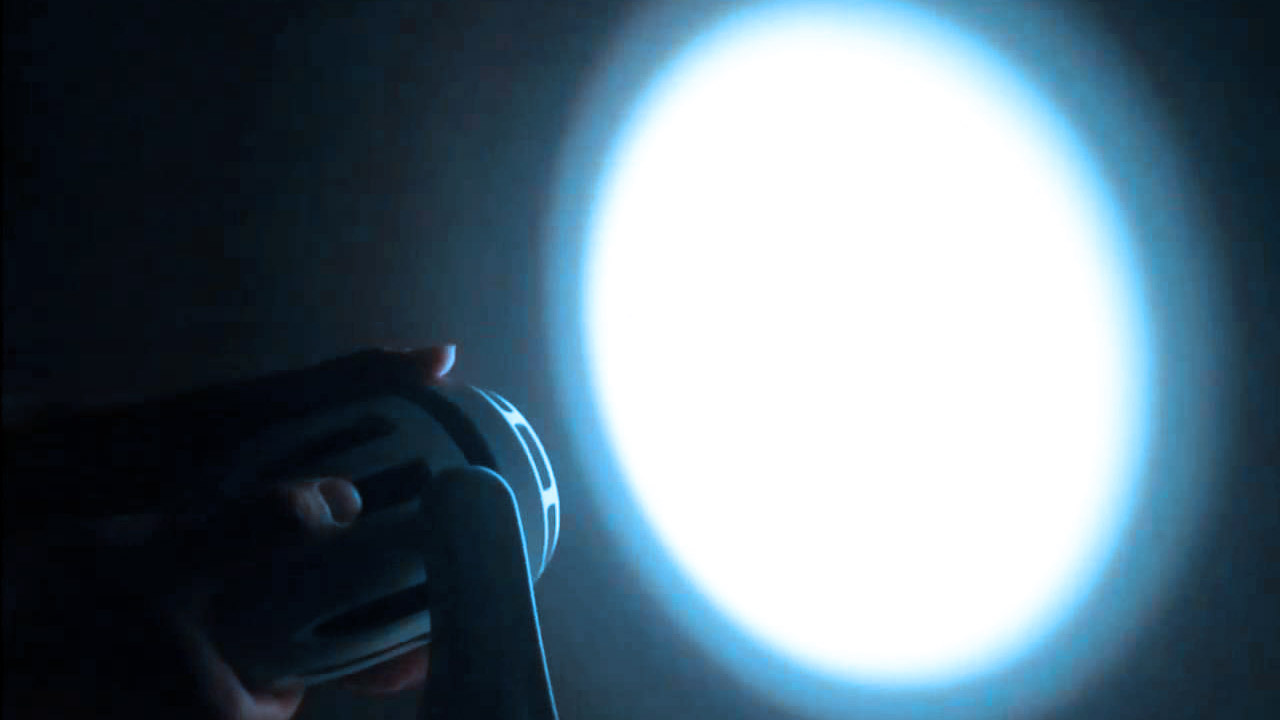
Light Flicker - Photo Tips Pixapro
Finally, people usually have Light Flicker when making videos or shooting pictures. Light flickers are a term for saying the constant change in the brightness over time, the light can be flutter or unsteady while using. It was caused by the voltage supplied or the power line fluctuating. There are many ways that can address the light flicker problem such as adjusting the FPS and Shutter speeds to make them equal to each other when taking photos. Enhance the LED light frequencies to have more than 10.000Hz which is the ideal frequency that can help avoid voltage change. By doing that photo tips, the power line and voltage supplied are plugged in properly without any problem. Checking everything constantly to avoid having errors.
The above content is about Continuous light, some definitions and applications of light for new photographers to learn more. If you still have any questions, you can contact Essential Photo at info@essentialphoto.co.uk.
EssentialPhoto and PiXAPRO are pleased to be a direct partner of Godox in the United Kingdom, with the largest collection of Godox stock available in the UK, so you can be confident with the support and assistance we provide. As we are representing Godox at The Photography Show 2022, this further shows our partnership and commitment to the Godox Brand, and we are always looking to expand this further.







































